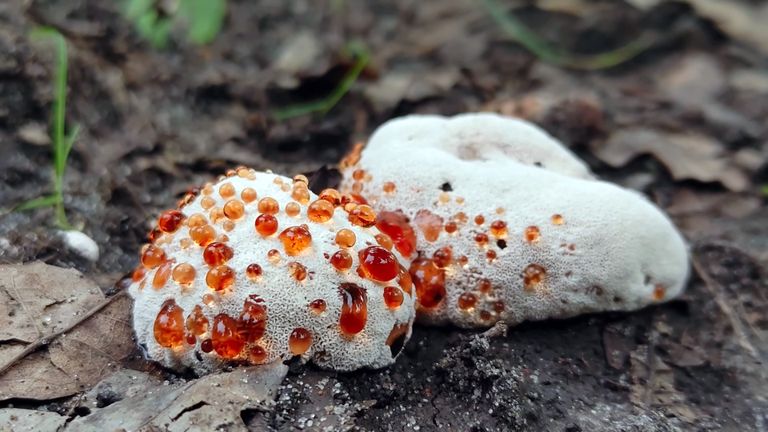
This species of mushroom comes in two forms. The first form is a regular shape with a brown cap and a whitish pore surface that turns red, red-brown when pressed.
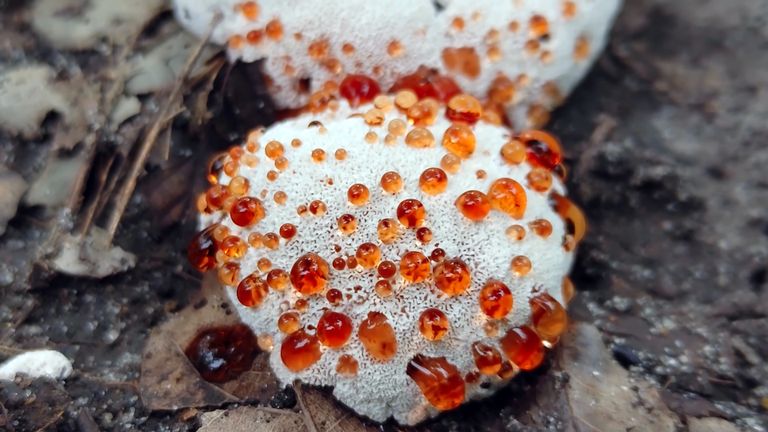
The second form is irregular, sloppy-looking, composed of many irregular white pores from which red sap oozes out. This form does not have a hat or a leg. This form is shown in the photos below.
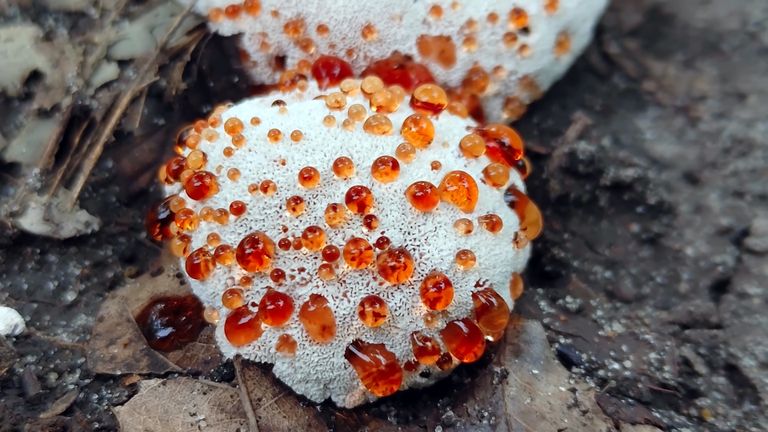
Occurrence. The fungus grows most often on deciduous trees, but occasionally it can be found on conifers. They grow in groups or singly around stumps and living trees. They cause white rot of trees.
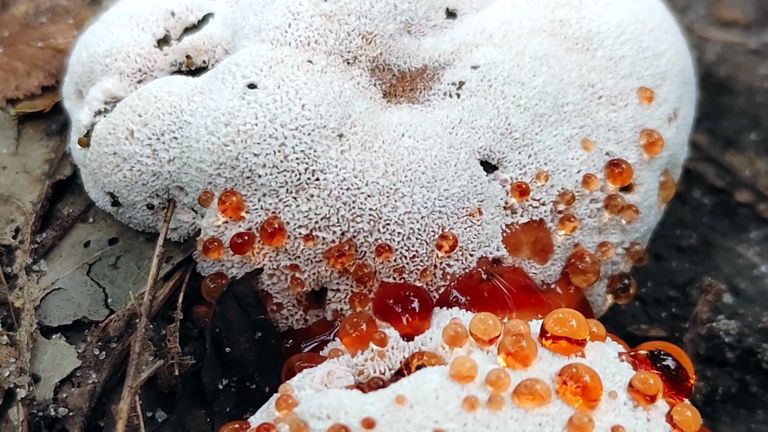
They grow both in summer and in winter if it is warm. The fungus is widespread in North America. In Europe and in Poland, it is more and more rare.
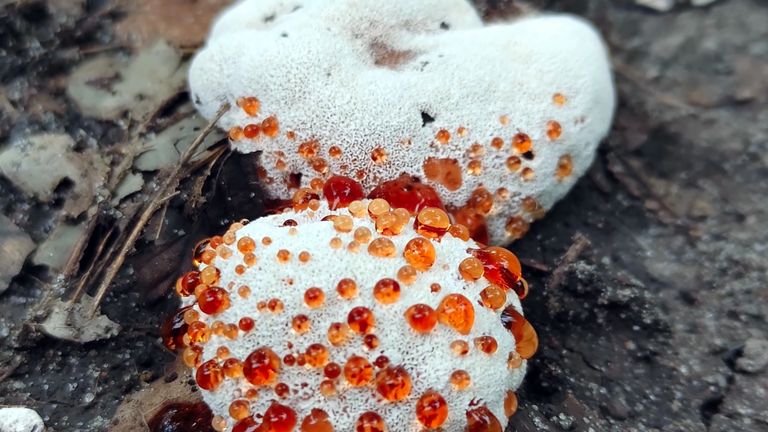
Structure: The fungus consists of an irregular mass of exposed pores with no clearly defined upper surface. The top is smooth. The surface of the pores is whitish, sometimes slightly pink, turns red, red-brown after mechanical damage.
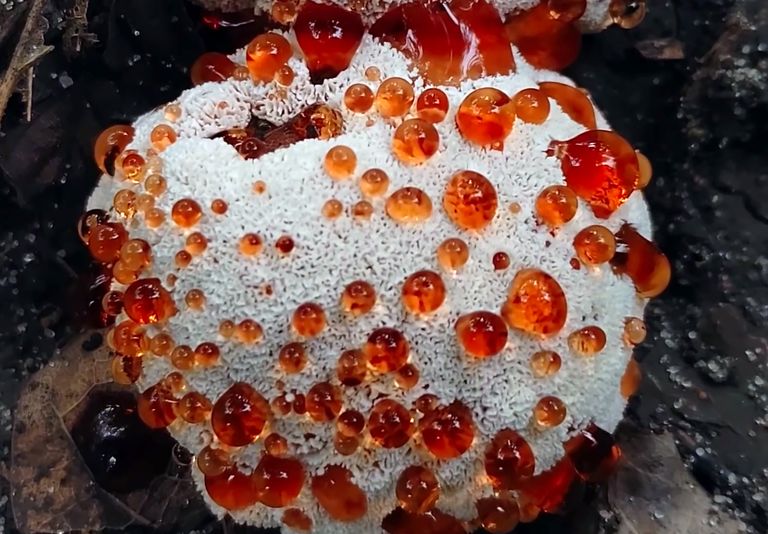
The flesh of the mushroom is hard, whitish to pinkish, secreting a liquid that is orange to red in color. The smell is rather unpleasant.

The fluid has a specific feature of being very slightly sticky. When touched, for example, with the tip of a knife, it leaves no trace on it and it flows freely.

The hat can be up to 15 cm in diameter, it can be semicircular, kidney-shaped, rounded. The surface of the hat is velvety, dry.
Inedible fungus
